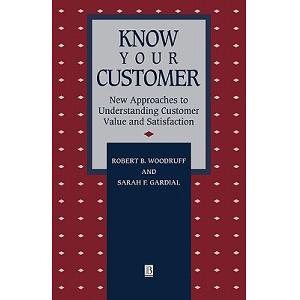The business does not exist without customers. Nowadays, the companies could analyze weather the customer is satisfied or dissatisfied by experiences or from some research literature. Many researches have been conducted to understand the customers. Through many research, some researchers come up with several opinion on how to measure satisfaction on customers. The measurement itself could give a valuable means and inspire the company to learn and managing the relationship with customers for the futures success. Satisfied customers are more likely to return to the organizations than are dissatisfied customers who could choose simply to go elsewhere (Ovenden, 1995).
The most popular view of customer satisfaction in academia is that customer satisfaction is the judgement borne out of the comparison of pre – purchase expectations with post purchase evaluation of the product or service experience (Oliver, 1997). Customer Satisfaction can result from any dimension (whether or not it is quality related) and its judgements may arise from non – quality issues (e.g. needs, equity, perception of ‘fairness’) and require experience with the service or provider (Taylor et al, 1994; Howard and Sheth, 1969).
There are some methodologies to measure satisfaction. For instance, research by Parasuraman, Zeithaml and Berry, 1985, 1988) give the basis for the measurement of customer satisfaction with a service by using the gap between the customer’s expectation of performance and their perceived experience of performance. Satisfaction is a person’s feelings of pleasure or disappointment resulting from comparing a product’s perceived performance (or outcome) in relation to his or her expectations (Kotler and keller, 2006). Kotler and Keller (2006) added if the performance falls short of expectations the customer is dissatisfied. If the performance matches the expectations, the customer is satisfied. If the performance exceeds expectations, the customer is highly satisfied or delighted. It is easy to conclude that the satisfaction derived from the differences between customer expectation and customer perceived.
Other models of customer satisfaction might be categorized as follow:
- Kano model of customer satisfaction is a quality management and quality technique that can be used for measuring client or customer happiness. Usually, non profit organization might use the term “client” rather than “customer”. Kano’s model of customer satisfaction distinguishes six categories of quality attributes: basic factors, excitement factors, performance factors, indifferent attributes, questionable attributes, and reserve attributes. The first three categories actually influence customer satisfactions.
- The measurement approach by Oliver is called as expectancy disconfirmation. According to this model, satisfaction may be defined as a pleasant past – purchasing expectancy of the customer.
- Fornell’s satisfaction model is based on an economic structural model. The model variables are analyzed in the following categories: (1) Satisfaction causes (quality, expectation, etc); (2) Satisfaction, and (3) Satisfaction results (complaints and loyalty)
- MUSA (Multicriteria preference desagregation approach) model measurements focus on the evaluation of an overall satisfaction including the analysis of associations between several norms, and the classification of customers into different distinctive segments.
Berry (2002) expands ten quality value which influence satisfaction. These ten domains of satisfaction include: quality, value, timeliness, efficiency, ease of access, environment, inter-departmental teamwork, front line service behaviors, commitment to the customer and innovation.
references:
Parasuraman, A., Zeithaml, V.A. and Berry, L.L (1985), “Conceptual Model of Service Quality and Its Implication for Future Research,” Journal of Marketing, 49 (4), 41 – 50.
Parasuraman, A., Zeithaml, V., Berry, L.L. (1988), "SERVQUAL: a multiple-item scale for measuring consumer perceptions of quality", Journal of Retailing, 64 (1), 12-40.
Ovenden, A. (1995). “Keep your customers happy and your competition will slowly fade away”, The TQM Magazine, 7 (1), 46-9.

No comments:
Post a Comment